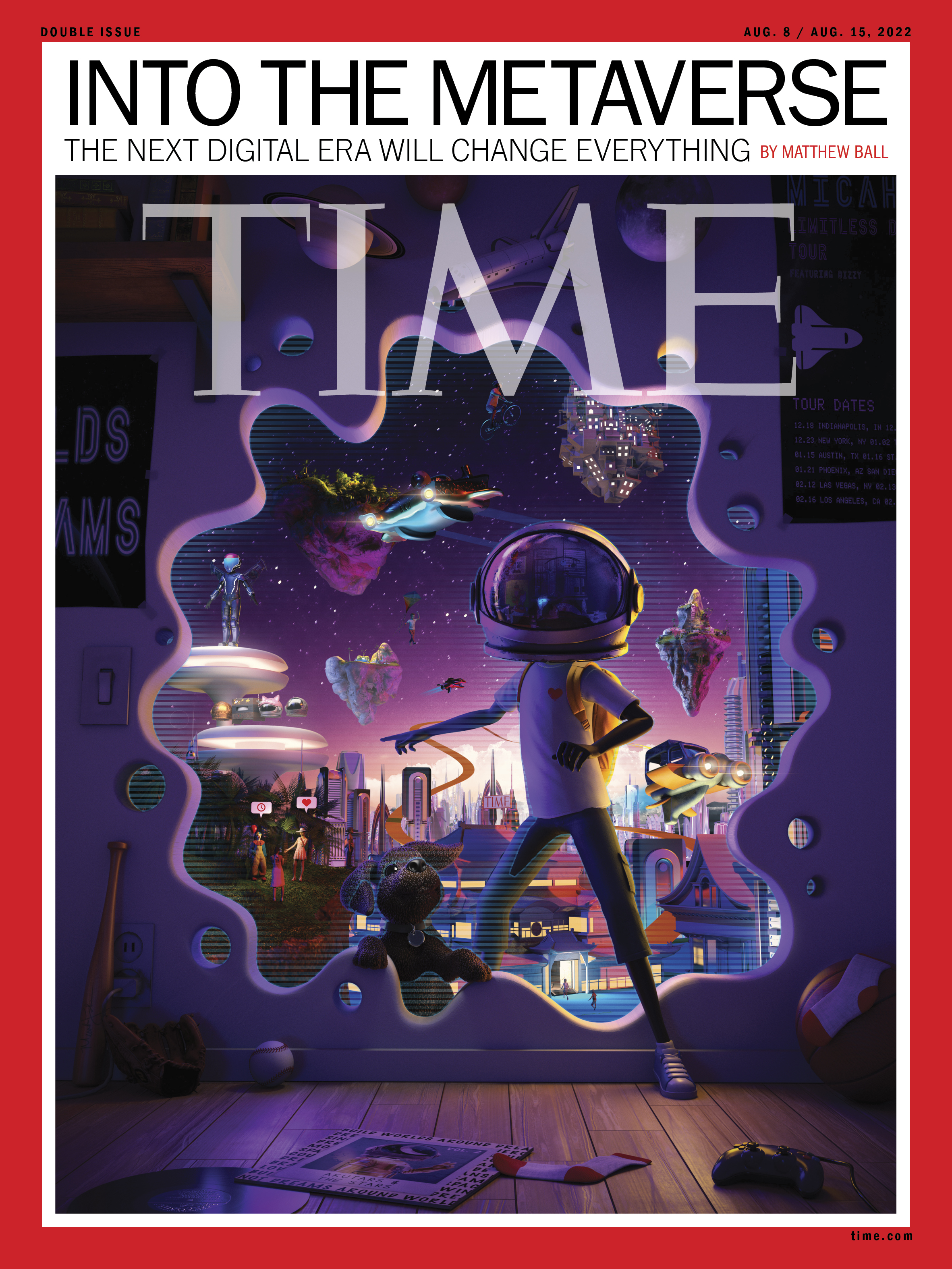
To depict the metaverse on TIME’s cover, we commissioned a renowned “digital explorer” to guide us into this new, imaginative world.
Micah Johnson, a former Major League baseball shortstop turned digital artist, rendered an image of a virtual portal featuring his character Aku, who Johnson considers the world’s first digital explorer.
After hearing a young boy ask his mom “Can astronauts be black?” Johnson created Aku with an oversized astronaut helmet and a thirst for exploring. In less than a year, his digital character has generated more than $20 million in sales and made Johnson the first NFT artist to secure a major TV and film development deal.

“I wanted to present him in a way that he’s welcoming others into the world that gave him this incredible platform to begin his journey,” Johnson said of Aku on TIME’s cover. “He’s most interested in exploring the past. He is able to learn from the giants that came before him who achieved their dreams in the face of adversity and he’s also able to see people who were denied access to their dreams because of their socioeconomic situation, gender, their race, or any other limiting circumstances.”.
As Matthew Ball writes in TIME’s cover story, the metaverse is a network of interconnected immersive digital experiences which will come to reach nearly all places, people, businesses, and parts of our lives. Johnson, 31, also wanted the cover image to capture what he considers to be its limitless potential.
Buy a print of TIME‘s Into the Metaverse cover here
More from TIME
“The metaverse is a crypto wallet that allows you to have a persistent identity across both physical and digital experiences,” explains Johnson. “The greatest potential is for people whose access to knowledge or experiences is limited due to their physical environments or circumstances. It gives them realistic access to a limitless world.”
Drafted by the Chicago White Sox in 2012 MLB draft, Johnson was the 2015 Opening Day starter at shortstop and recorded his first major league hit in his second at bat. After stints with the Los Angeles Dodgers, the Atlanta Braves and multiple injuries, including a fractured wrist, Johnson retired from professional baseball in 2015 to explore his “hobby.”

“It was not an easy transition. I went nearly two years without selling any of my artwork, which at the time was purely on physical canvas and I began to really doubt myself,” said Johnson. “But, when I discovered NFTs and cryptoart in late 2019, the welcoming nature of the community put any self doubt and nervousness at ease.”
Johnson, who now runs a 3D animation studio, started painting on a traditional canvas before realizing the power of NFTs and digital art.
“Painting on a traditional canvas is very much a personal practice. It’s like when I was in the batter’s box all alone – nobody else can help me when my brush is on that canvas,” he says. “3D animation is very much a team sport, which is why I love it so much. Playing well but losing pales in comparison to playing bad and your team still wins.”
More Must-Reads From TIME
- The 100 Most Influential People of 2024
- The Revolution of Yulia Navalnaya
- 6 Compliments That Land Every Time
- What's the Deal With the Bitcoin Halving?
- If You're Dating Right Now , You're Brave: Column
- The AI That Could Heal a Divided Internet
- Fallout Is a Brilliant Model for the Future of Video Game Adaptations
- Want Weekly Recs on What to Watch, Read, and More? Sign Up for Worth Your Time
Contact us at letters@time.com